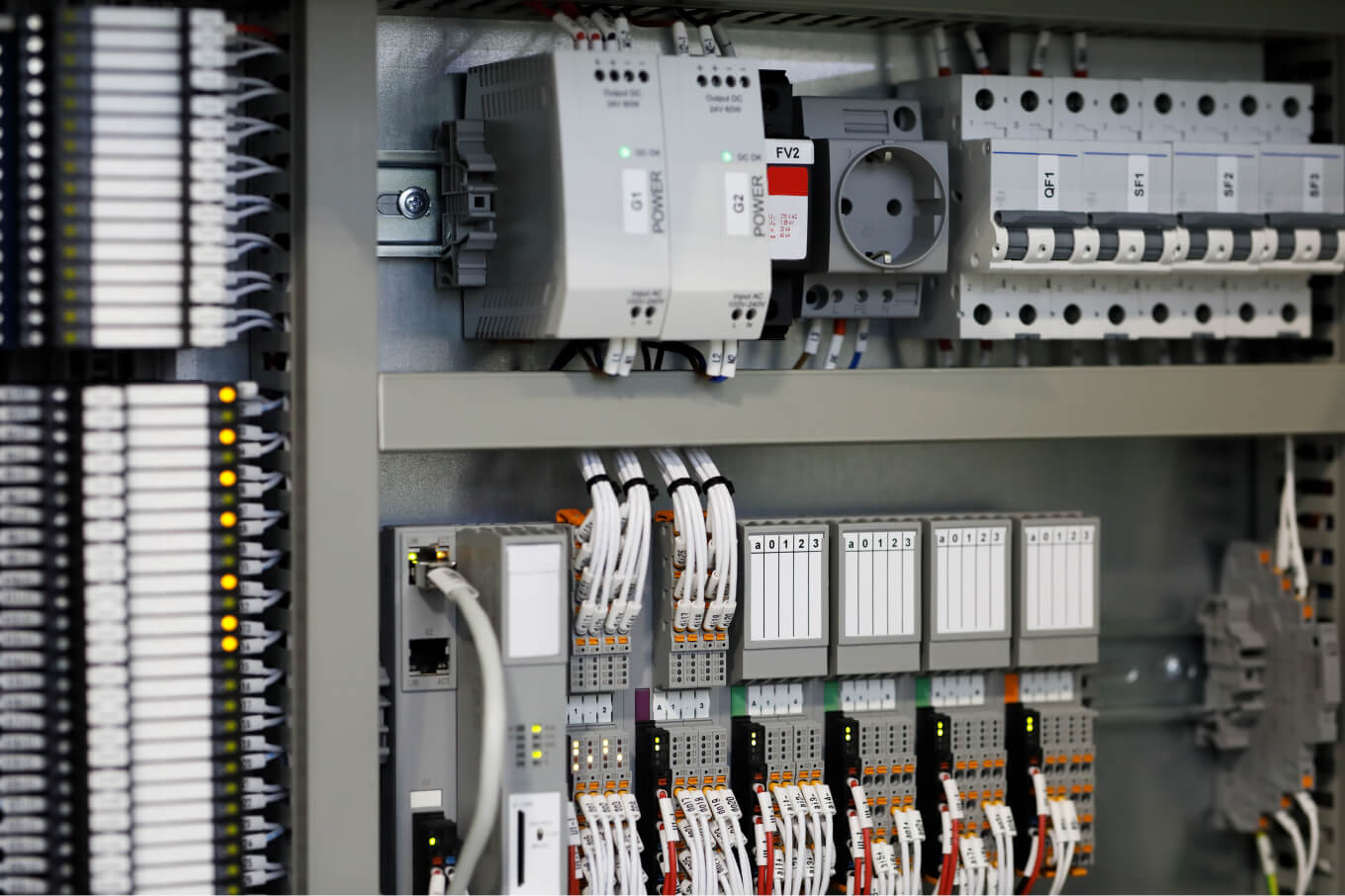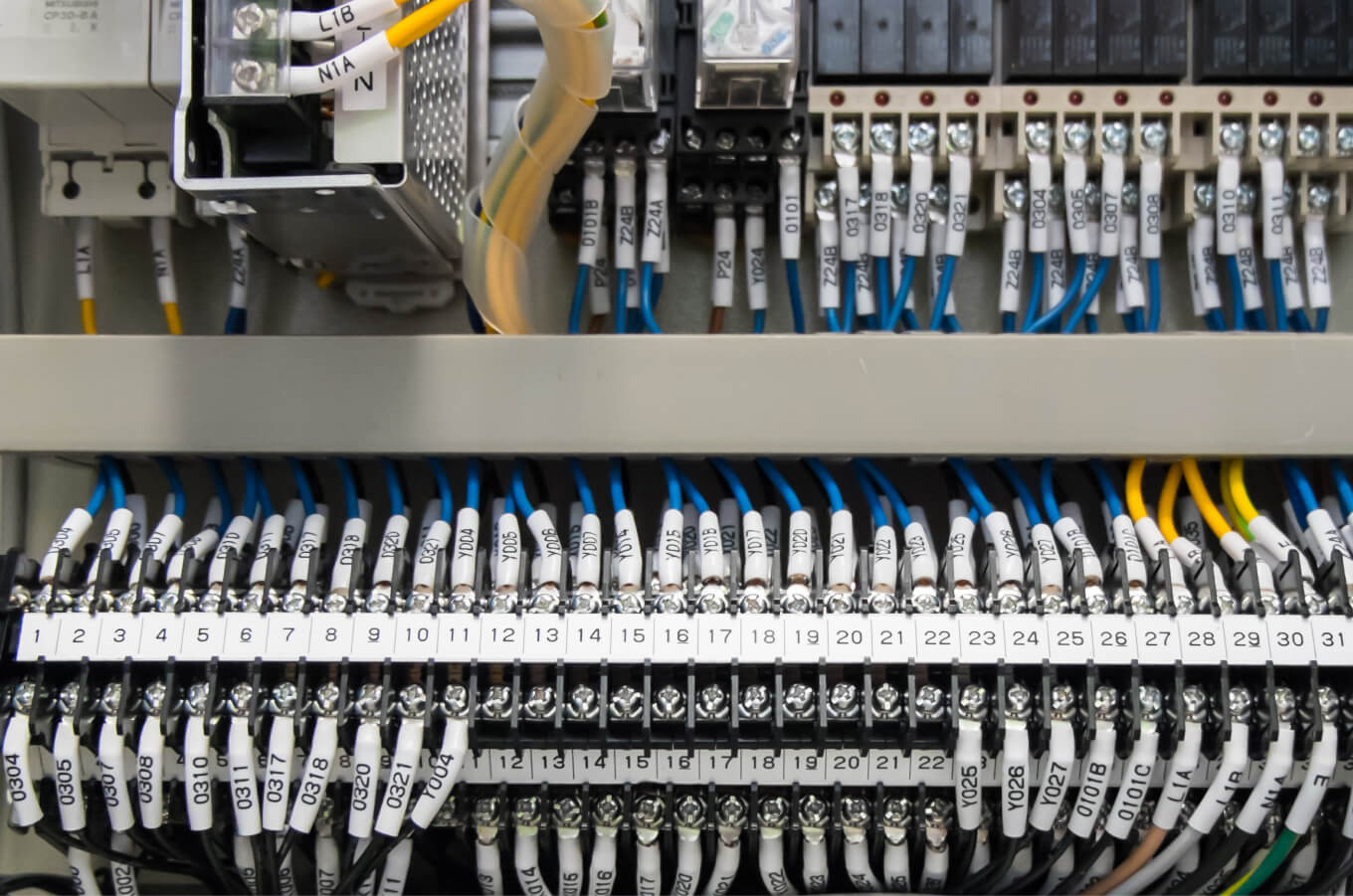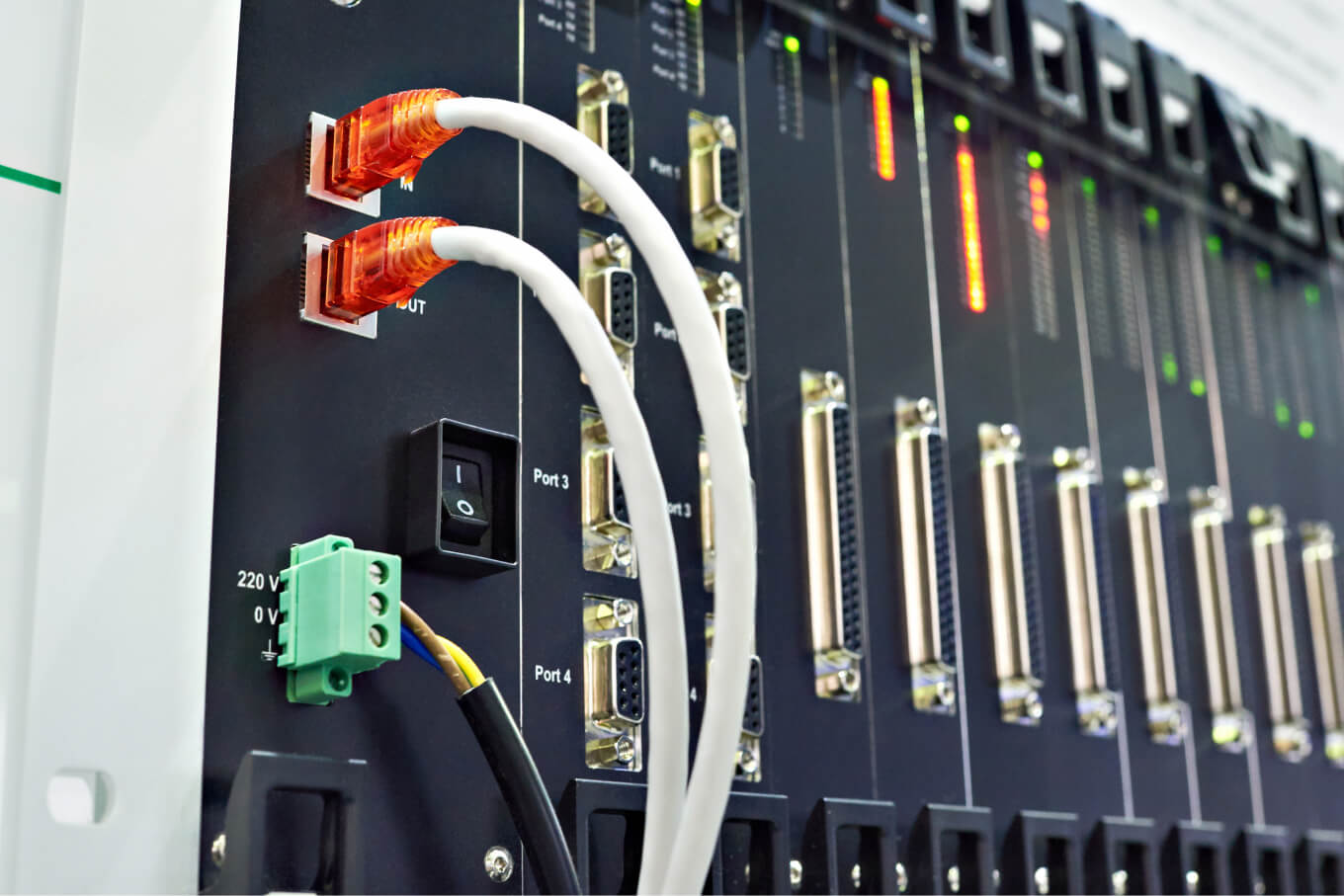April 27, 2021

Control panels have come a long way from the panels of 20 years ago. Control panels have become more energy efficient as components and technology becomes more advanced.
These improvements in efficiency allow components to run at cooler temperatures with less energy loss and significant heat reduction. With strict assembly requirements of UL508a we are required to allow for correct spacing for heat distribution.
Most control panels built were originally controlled by a high AC power source consuming high amounts of energy and creating large amounts of heat. Improvements in control panel design and controls now use lower DC power sources, allowing for less heat and components can be placed closer together reducing the panels footprint.
Control panels have had major improvements in safety from the past. Control voltages dropping to 24DC and the incorporation of finger safe devices being manufactured are just a few.
Live energized components are now recessed or encapsulated allowing for a much safer environment eliminating the risk of injury. The improvement in covers for components that do not allow for finger safe or recessed assemblies have also reduced the risk of injury.
Arch flash is a major danger and concern when working with control panels. Arc flash is the light and heat produced from an arc fault, a type of electrical explosion or discharge that results from a low-impedance connection through an electrical system.
The installation of Lexan Arc flash shields to our panels allows for a safe work environment for the operator and reduces the potential for arc flash.
All our panels are NEC/NFPA 70E/508A compliant which protects against arc flash and makes the panels safer for the operators. Prism incorporated safety components and devices into our control panel building process to insure for safe operation and to mitigate the risk of injury.

Smart printers now offer customizable marking options for control panels. Smart printers offer a wide variety of label and printing options for your needs. The modern and intuitive interface makes printing a fast and simple process. With a wide variety of label options from push button labels to heat shrink wire labels allow for clear and concise labeling.
These improvements have made labeling easy and fast when building control panels. We use different smart printers for our labeling needs. We have smart printers for arc flash labels, terminal blocks, push buttons, pilot lights, switches, and most components.
With the improvements in materials and engraving techniques we are now able to provide custom placards for our control panel builds. We can size, engrave, and cut custom signage for control panels in multiple colors and backgrounds. Our in-house engraver can produce placards and signs 12”x 8” with custom text in multiple sizes and fonts.
Control panels have evolved through the years and have gone through many different stages. Imagine a large production and assembly line manufacturing vehicles. Each stage of the production was controlled by a local control panel close to the manufacturing equipment and had to be manually monitored and operated.
This resulted in extra manpower, high energy use, and some hazardous tasks placed the operator close to moving or dangerous equipment. Advancements in controls panel building led to moving the local panels to a controls room removing the operator from hazards and reducing manpower.
Control rooms allowed for multiple control panels to be in a central location with individual input and output signals transmitted and received. This method was effective for consolidating manpower requirements and gaining a greater perspective of the overall process.
Control rooms also came with their disadvantages. With reducing manpower, now a single operator was required to operate multiple stations with continual movement to monitor the entire process.
Each control loop had its own controller hardware, so system changes required reconfiguration of signals by re-piping or re-wiring. With the introduction of electronic processors, signaling networks, and graphic displays a concept of disturbed controls could be obtained.

As control systems have become more innovative, programmable logic controllers (PLC) came to replace the many control network racks, relays, and control equipment once needed for the old DCS (distributed control system). PLC control enabled networking of signals to a central control area with electronic displays.
PLC control systems were first developed for the automotive industry on vehicle production lines, where sequential logic was becoming very complex. It was also used in many other manufacturing processes such as natural gas and water treatment plants.
As the industry moved towards increased code standardization with reusable, hardware-independent control software, object-oriented programming became possible within industrial control systems.
This led to the development of programmable automation controllers and industrial PCs. These are platforms programmed in the five standardized IEC languages: ladder logic, instruction list structured text, sequential function chart, and function block. They can also be programmed in modern high-level languages such as C or C++.
Today’s modern control panels are much more sophisticated and advanced than control panels of the past. Complex systems can be created with networks controllers communicating using industry standard protocols. Networking allows the use of local or remote SCADA operator interfaces and enables the cascading and interlocking of controllers.
These types of enclosures are typically investigated to ensure that the unit complies with the construction-based requirements as outlined in the UL 508A. These are not investigated with the electrical components in place; therefore, once the components have been added, they will need to be re-evaluated by the AHJ that is the head over that field.
These types of electrical control panels include the enclosure, the electrical components within, as well as the items that are used to mount to the walls or to simply close in the panel. These are investigated to ensure that they pose no electrical fire hazard or any type of shock hazard. They are not reviewed for their unique ability to effectively control electrical equipment.
These control panels include wiring, terminals, and various other types of components, as well as mounting devices attached to a subpanel that do not include a complete enclosure. The enclosure that is included with this type of industrial control panel is only intended to be a part of the overall installation.
Computer Aided Engineering is the use of computer software to simulate design and performance to improve product designs or assist in the resolution of engineering problems for a wide range of industries. This includes simulation, validation and optimization of products, processes, and manufacturing tools.
This automation consists of not only the machines but also the supportive electrical and pneumatic systems, which, regardless of the design approaches used for automated machines, can be applied to the design of their associated systems.
To avoid costly design changes, there is a clear need for a systematic and iterative design methodology at the conceptual design stage. For the control panel, the conceptual design method allows for proper layout and spacing requirements of UL508a.
Control panel design should be initiated at the conceptual design phase to consider optimal device layout and wiring connections meet safety and maintainability guidelines and standards and facilitate computer aided design in the detailed design phase. Thus, conceptual design of control panels can be incorporated into the integrated function modeling of automated construction machines.